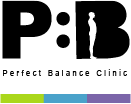In this article, we take a look at the research behind Osteoporosis and exercise in the UK. When considering the right approach to managing Osteoporosis and Exercise it’s important to have a balanced evidence-based approach.
Have you been told you have Osteoporosis and exercise been mentioned as a solution?
This can be quite a worrying thing to find out about your body. Osteoporosis affects local bone strength due to a loss of density of bones and is a frequent contributing factor to fractures in our gradually ageing population. In some cases, the fractures that osteoporotic people suffer have huge consequences for a person’s entire health.
Critical sites such as the hips, pelvis, and spine become more likely to be fractured leading to increased disability and statistically leading to increased mortality. In general, it is postmenopausal women that are most at risk of developing this condition, however, a recent American study has suggested that almost 40% of new osteoporotic fractures are in men.
The good news about Osteoporosis and Exercise UK is that it is entirely manageable and can be improved with the right advice and care. Most advice given to those of the population who are told they are osteoporotic is to increase their calcium and vitamin D intake, alongside other nutritional substances that our Nutritionist would be happy to advise on.
Nutrition is a fantastic start to tackling the problem and one we recommend here at perfect balance. But such is our 360-degree approach to all things health it is not the only branch to the tree that is bone health and we just can’t resist the opportunity to help someone BE BETTER! Exercise is another big factor in bone health.
Now I know what you’re thinking, Exercise! You must be having a laugh, my bones are crumbling, I can’t exercise well good news! You are wrong! Many forms of weight-bearing exercise have all been shown to help improve bone mass and prevent bone loss when investigated. Moreover, the improved balance and fall reduction achieved through exercise are vastly important and reduces reliance on pharmaceutical intervention.
Despite the apparent frailties that appear besiege those of the population with Osteoporosis, fantastic new research is ripping up all that we thought we knew about the condition. Weight (resistance) training is showing amazing potential for reducing the loss of bone and increasing neuromuscular (balance and movement) performance, even in people with very low bone mass taking part currently in the ongoing LIFTMOR trial (Lifting Intervention For Training Muscle and Osteoporosis Rehabilitation).
It is thought that the higher bone strains associated with high rates of force development are the stimulus behind increased production of bone. Similar to jump training which has also been shown to improve bone health, the need for quick and powerful muscular contractions has been identified as the underlying key to the improvements.
The accompanying muscle wasting (sarcopenia) that accompanies osteoporosis supports this theory. Research also exists that suggests high childhood activity levels may strongly decrease the chances of osteoporosis in adulthood.
Clearly, the limits in which we are operating to try and manage Osteoporosis have shifted dramatically. Cases that we once thought needed low impact weight-bearing exercise are in fact prime candidates for high force, weight, or jump training. This is, of course, providing there are ample stability and balance to start this kind of training and there is no imminent fracture risk.
If you suffer from osteoporosis then have a think about tapping into our resources here at PB to combine great nutritional advice and revolutionary rehabilitation techniques to keep getting the best out of your body to help you be better.
For more information about Osteoporosis and Exercise UK
This article was written by our team of specialist therapists at Perfect Balance Clinic. If you would like more specific advice about how our team can help you with this condition or symptoms you may be having, please complete the contact form below and one of the team will get back to you shortly.
References
Hinton, P.S., Nigh, P. and Thyfault, J., 2015. Effectiveness of resistance training or jumping-exercise to increase bone mineral density in men with low bone mass: a 12-month randomized, clinical trial. Bone, 79, pp.203-212.
https://nos.org.uk/about-osteoporosis/what-is-osteoporosis/
Mosti, M.P., Kaehler, N., Stunes, A.K., Hoff, J. and Syversen, U., 2013. Maximal strength training in postmenopausal women with osteoporosis or osteopenia. The Journal of Strength & Conditioning Research, 27(10), pp.2879-2886.
Watson, S.L., Weeks, B.K., Weis, L.J., Horan, S.A. and Beck, B.R., 2015. Heavy resistance training is safe and improves bone, function, and stature in postmenopausal women with low to very low bone mass: novel early findings from the LIFTMOR trial. Osteoporosis and exercise uk International, 26(12), pp.2889-2894.
Raastad, T., Kvernvik, K.J., Johansen, M.A., Running, A., Dullerud, R., Kvamme, N., Solberg, P. and Gautvik, K.M., 2015. Marked improvement in physical function through gains in muscle strength and thigh muscle size after heavy-load strength training in women with established postmenopausal osteoporosis. Journal of Osteoporosis and exercise uk and Physical Activity, pp.1-8.




